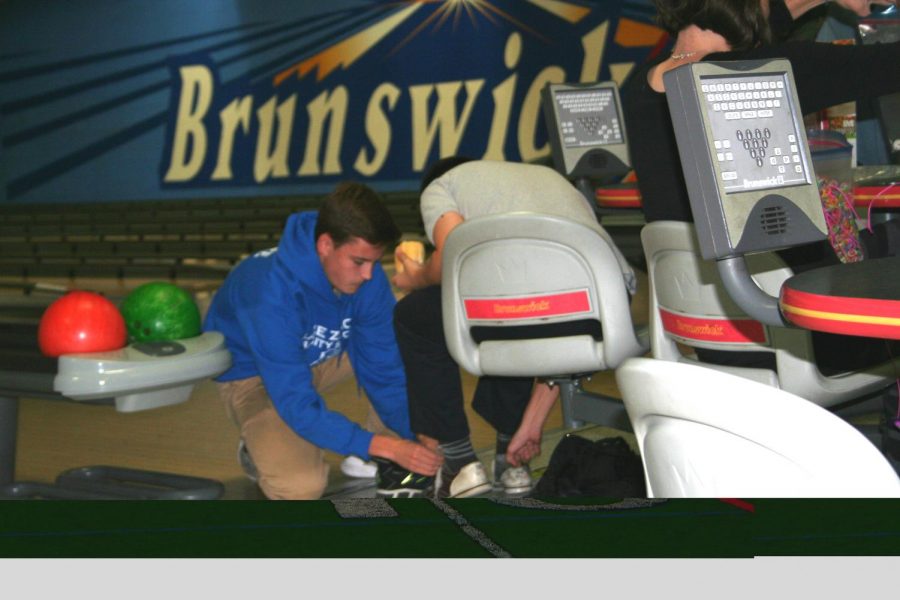That’s how they bowl
students in SNAP form long-lasting bonds through bowling
For members of SNAP, Wednesday afternoons are all about taking over the bowling alley to participate in hours of fun, relaxation, and bonding.
“The way SNAP is set up is that a kid who’s in the program is then set up with a ‘buddy’ which is any high schooler that signed up to be in the club, and they stick together for the rest of the year,” Kayli Antonoff, senior co-president, said. “The bowling days really build up that buddy-student relationship. It gives these kids a chance to form a special bond and trust with someone.”
According to Antonoff, it is an integral part to the Special Needs Athletic Program at the school, better known as SNAP.
“Wednesday after school bowling was something Mrs. Mowinski started a long time ago,” Kayli Antonoff, co-president of SNAP, said. “School is really stressful and after a long week, it’s really fun to just go hang out at the bowling alley with your friends.”
Meredith Carrigan, senior co-president, sees the opportunity for SNAP kids and their buddies to hang out in a laid back setting to have long lasting,positive outcomes. “The people that you work with in this club have a lasting effect on you,” Carrigan said, confirming the bonds formed at SNAP are unique and profound.
Carrigan and Antonoff emphasize that alongside partnerships, athleticism is an important aspect of SNAP. The program puts a heavy emphasis on athletics because group sports are an activity many high schoolers enjoy but take their ability to participate for granted.
“For these students, in the world, there aren’t a lot of opportunities to participate in athletics the same way their peers do,” Meredith Carrigan, co-president, said. “They are unable to join lots of activities, like team sports, that other kids can try out for without [a thought]. This club gives them these opportunities.”
Sports also teach valuable lessons and concepts to kids in the program in a fun, memorable way through bowling, Antonoff said,
“We’re not trying to create really awesome professional athletes,” Antonoff said. “The point is to make the [kids] well adjusted individuals that are happier and learning every day while also having a little fun at the same time too.”
One freshman motivation for joining SNAP came from the great reputation the program had in creating supportive relationships for it’s members while keeping them active.
“There’s a million kids there. A lot of kids go there because of a lot of people that are like me and they want to relax and have fun,” Noah Berman, freshman, said. “My friends and I in SNAP love going so much. It’s my favorite part of the week. “It’s really fun, gets them active, challenges them not to hard but hard enough to make them feel better.”
Berman expresses his appreciation for his SNAP buddy, speaking of how the buddies assigned to him challenge him to be better but never push him to where he is uncomfortable.
“Having a buddy adds a challenge to it. If you’re pinned against a very good person who bowls very well, and you bowl very well, it’s a challenge between who is the fastest and I love the challenge. The challenge is very fun,” Berman said. “I would recommend it to any parent that has a child that’s like autistic, special needs.”
Berman’s love for his partner is reciprocated by the buddies assigned by the program, Antonoff and Carrigan said. Both speak of the lasting bonds they have formed with their buddies, revealing how they sometimes even have dinner with their SNAP member’s family, or hangout with them outside of school. Antonoff sees her time with SNAP as being a part of something special.
“I remember one time one of my SNAP kids had a very bad day at school and she just walked in completely miserable,” Antonoff recalls. “And for the rest of the afternoon, I sat outside with her and talked to her. She told me how she felt so much better talking to me because I made her feel heard and respected and that was an overwhelming moment for me. That’s why I do SNAP. That’s the bond we’re talking about.’
The spread of happiness that Antonoff and Carrigan work so hard for is making its impact. According to Berman, he is much happier now than before SNAP and it’s truly made a positive impact on his life.
“My mom decided if this was going to be good for me, and I didn’t want to do it at first at all and I thought it was going to be boring and not fun,” Berman said. “After two years I became a lot more happy. Before I was slow, I couldn’t make friends much because of my loud demeanor and my roughness and SNAP taught me how to have fun, don’t be too rowdy, always be good to yourself, and never change who you are because who you are is awesome.”

The most important thing you need to know about Ria is that Shonali is her real name. This will be her second year on staff as the co-editor of Bear...

